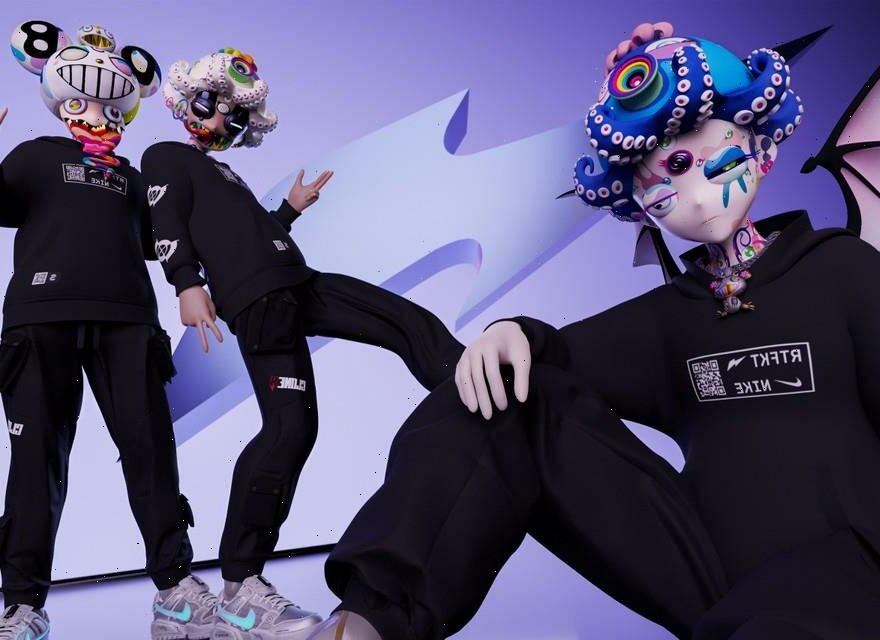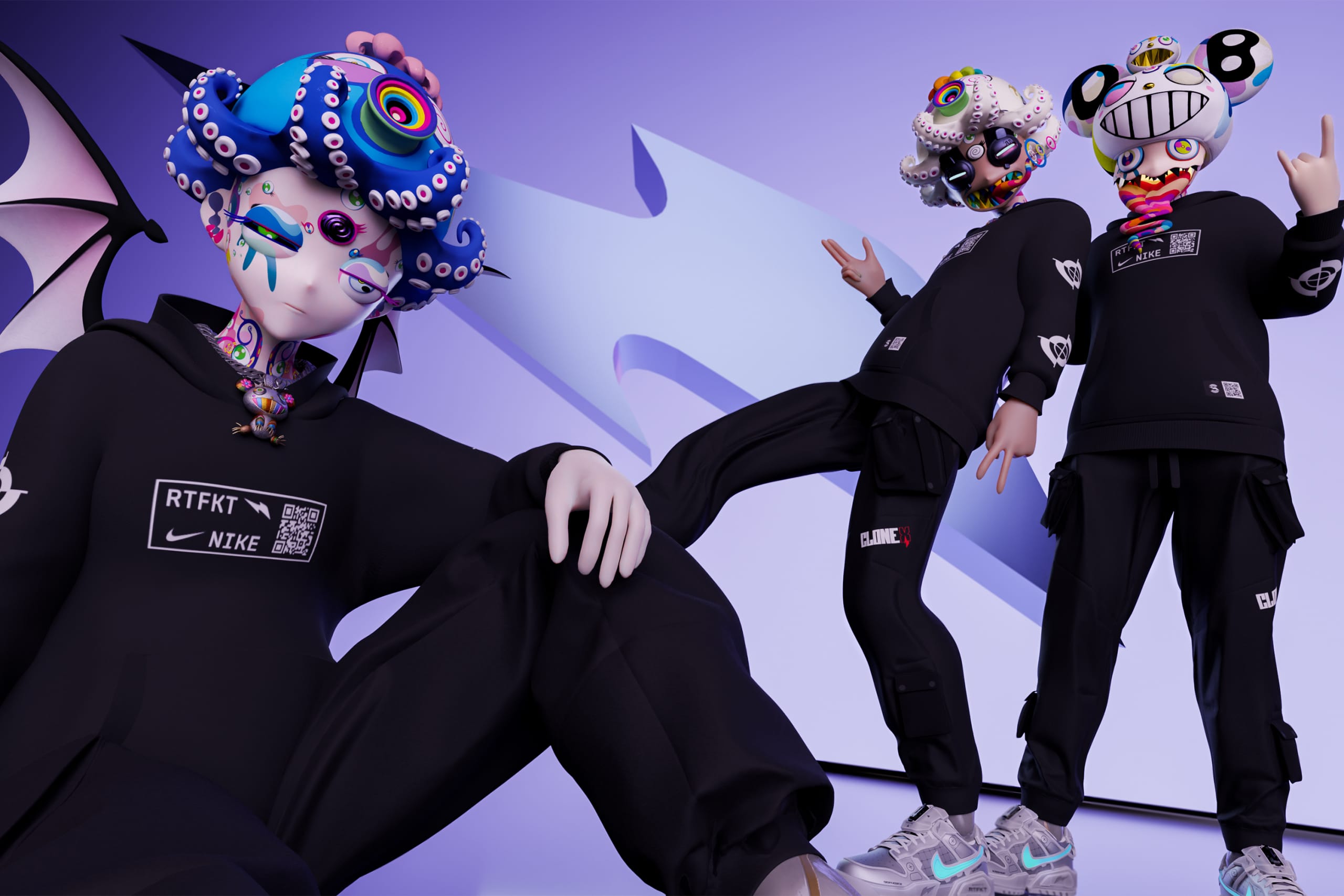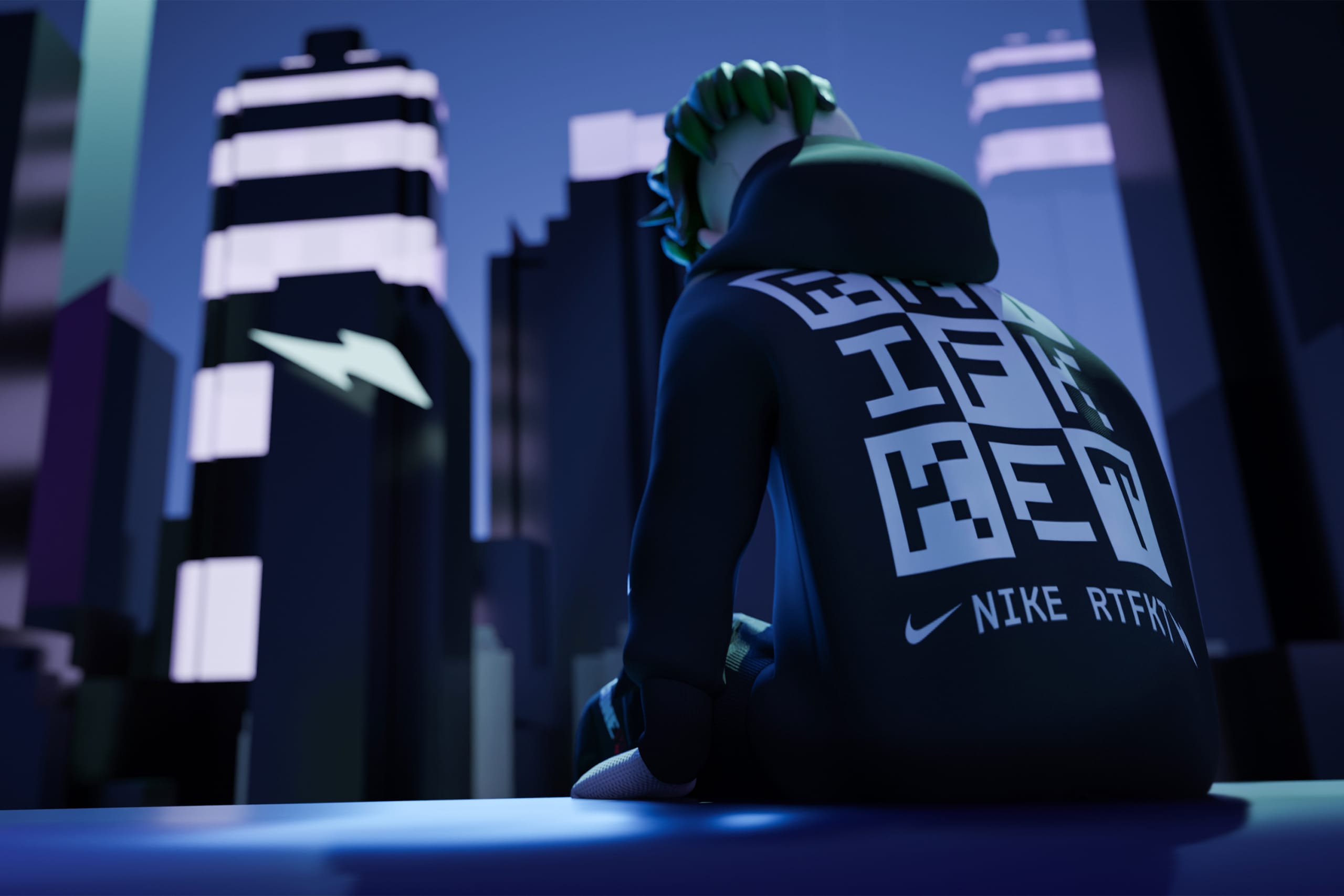RTFKT Studios has certainly made a name for itself in the nascent space of the metaverse. As one of the leaders shaping the parameters of what’s possible, the Web3 fashion house is providing the tools and resources necessary for creators to find that “next level” of creativity. Launched in 2020 by founders Chris Le, Benoit Pagotto, and Steven Vasilev — all of various backgrounds in the tech space — the group is as mysterious as it is innovative, and in two years the tryptic have redefined the boundaries of physical and digital value. Using game engines, augmented reality, blockchain authentication, and NFTs, RTFKT (pronounced “artifact”) has released “next generation collectibles,” including the $3.1 million sale of 600 physical-virtual sneakers in collaboration with NFT artist Fewocious, as well as the Clonex NFT avatars project. Acquired by Nike in December 2021, RTFKT has helped accelerate its digital transformation beyond a mere “sneaker” company since, opening the doors to a truly customized sport x gaming x tech culture. From AR hoodies and digital sneakers to NFC chips and blockchain authentication, RTFKT is setting and resetting the standard for what it means to bring legacy fashion into the Web3 space.
Can you spill the beans on your inception story, beyond the many surface-level conversations you may have had previously when asked that same question?
Benoit Pagotto: We started RTFKT to be the open-source blueprint of the brands of the future—made by creators and for creators. I met Chris and Zaptio while I was at the e-sports team Fnatic, where we aligned our vision for a new type of brand with no legacy or business model to hold it back, in an era where gaming is the predominant culture.
Zaptio: It began with the creation of an Instagram account, where we created content using Chris’s 3-D skills.
Chris Le: I was designing skins for CS:GO [and] DOTA 2, which eventually led me to designing video game skin sneakers. When the Fnatic League of Legends (LOL) team got invited to the annual LOL World Championship, we decided to make the sneakers real, so that they could be worn during the finals. The rest was history.
How would you define Web3 as it pertains to what RTFKT represents?
BP: Web3 is the start of a truly digital, borderless, alternate, and weird version of the world powered by a totally transparent economy. Within these alternate reality narratives, we are all creating, sharing, and earning income and tokens.
Z: It is the natural evolution of the Internet and social media generation. We are the first generation to have this level of technology, allowing us to be more aware of how brands, societies, platforms, and economies work. We are big believers in open sourcing tools and opportunities to empower the community to create their own utilities and revenue opportunities.
CL: It is the true start to the sustainable future, where consumerism is placed online, giving our planet some breathing room. Humanity will begin to consume less in the physical world, while many habits of buying and collecting useless things will now be done in the metaverse.
How did Nike’s acquisition change RTFKT’s infrastructure in leveraging legacy fashion with virtual sneakers?
Z: It heavily solidified our vision of extending digital and physical collectibles through our inspiration and love for Nike’s sneakers.
BP: It also sent a clear message across the globe: Web3 is the future and everyone should be taking this seriously.
CL: It was inevitable that the world would head in this direction. Coming from the video game and skin industry, I noticed patterns of players showing that they attributed more value in digital assets.
Z: The cultural and collectible sneakers that Nike created changed the physical collectible industry and culture forever. The acquisition has allowed us to maintain a level of independence, where we are able to pursue our same vision.
“We are misfits, nerds, and go-getters. We are always trying to stay ahead of these cultures and worlds by figuring out how to merge them to create something new for the brand.” — Chris Le
What drives your conversations of true “disruption” and uniqueness that newcomers in this space should pay attention to?
CL: The Internet and gaming culture is part of our backbone. As three co-founders, we are misfits, nerds, and go-getters. We are always trying to stay ahead of these cultures and worlds by figuring out how to merge them to create something new for the brand. We leverage our expertise from video game mod culture and help empower the creator community to be more creative.
Z: RTFKT is more than a brand. We are building a new culture, and community is the backbone to our brand.
BP: We simply do what we feel is right, and what we love. There is no secret formula, as everything we do here is new to the NFT world, and you can never know what the true outcome will be. It’s what makes this exciting: You can really pioneer concepts, products, and ideas with the best team and best community.
What additional value-add is RTFKT currently working on with some of its other projects?
Z: Everything we do is through a step-by-step process. All of our projects stem from big overarching visions of the potential future we foresee. We are in a position to break traditional norms and be innovative.
BP: We’ve been curating key brand collaborations with some of our favorite brands and people that will extend RTFKT forging mechanics to create NFTs and physical collectibles, opening new wearable categories for clones and our avatar ecosystem.
Z: We have been recently working on creating the bridge between digital and physical products with the use of NFC technology mixed with NFTs. We have multiple drops setting the tone of how we see fashion evolving in this Web3 environment.
CL: In addition to these upcoming, innovative projects, we always go back and continue to build upon our old projects. They are all important IPs! Just like video game studios, we also go back and update and add new features to all our past drops and make sure everything connects together.
“There are no boundaries in the metaverse. The people and market will decide if you make it or not.” – Benoit Pagotto
What would you consider to be a “reasonable boundary” in enabling legacy fashion to enter into the Web3 space, while simultaneously protecting native Web3 brands and artists that want to build without restriction?
CL: Be lenient with the creators! Creators are there to help build your brand, and it should feel like the brand and creator co-exist with one another. In other words, let them use the IP to create their own brands and products within the ecosystem. By learning to adapt, these legacy brands can help the creators build. You help them, they help you.
BP: As long as legacy fashion brands understand that from now on, it’s not only about them and their quarterly results—but about empowering your community for real—it will be beneficial to the overall ecosystem. There are no boundaries in the metaverse. The people and market will decide if you make it or not.
What do you feel is the biggest challenge RTFKT faces right now that it is currently working to overcome?
BP: The main challenge is keeping up with the scale of the business and hype we generate while keeping the team relatively small. RTFKT is a new type of brand, and Web3 is a whole new way to think of the alliance of creativity, community, and business. This requires us to maintain a team of very different types of talents from different industries and backgrounds—from gaming, hospitality, and collector services to the industry economist. It’s a challenge in itself to shape, assemble, and grow our team of misfits, but that’s also one of the best parts.
What do you feel the fashion industry is still lacking when it comes to the “virtual sneaker” market?
Z: Similarly to traditional sneakers and fashion, I think it comes down to the utility exchange. Brands that don’t embrace culture or evolving customer desires die down. With RTFKT, we are building based on our experiences in traditional sneaker and fashion backgrounds. However, we are reimagining the end-end process in a way that fits with our vision of the future.
CL: A lot of the other projects are just getting FOMO’d in seeing a lot of publicity around Web3. They don’t want to look outdated compared to everyone else, and they’re jumping in without thought and trying to get press coverage. These companies need to study and understand gaming culture, Internet culture, and really figure out how to innovate in the space differently. It’s very early; there’s room for a lot of cool ideas. For the longest time, the industry needed something new—from film, music, and fashion. Web3 is that new opportunity for all these industries to come in and really build something new together, and there’s a lot of time to build.
HYPEBEAST Magazine Issue 30: The Frontiers Issue is now available on HBX.
Source: Read Full Article


